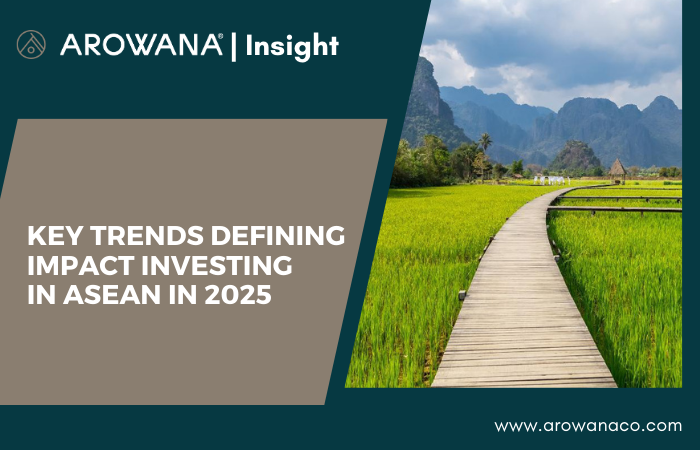
Southeast Asia is emerging as a key battleground for impact capital in 2025, as investors sharpen their focus on climate resilience, financial inclusion, and gender-smart investments.
The latest data from the Global Impact Investing Network indicates that 90% of Asia-focused impact investors are meeting or exceeding their return expectations, fuelling further capital inflows into the region. Nearly half of global investors surveyed plan to increase their ASEAN allocations this year.
Private capital has long underpinned Asia’s economic growth, financing industrialisation, infrastructure, and technology. But as environmental and social pressures intensify, the conversation is shifting from sheer expansion to sustainable, high-quality development.
Impact investing is now at the forefront of this evolution, aligning private capital with national growth strategies to ensure long-term, inclusive prosperity.
With ASEAN nations under increasing pressure to decarbonise, the transition to net-zero is no longer a distant ambition but an urgent priority. Governments are tightening environmental policies, investors are demanding more rigorous ESG adherence, and the region’s vulnerability to climate shocks is forcing a recalibration of risk and opportunity.
Climate tech and renewable energy are set to dominate investment flows. Solar, wind, and hydro projects are attracting capital, alongside innovations in energy efficiency and climate-resilient infrastructure. Sustainable agriculture is also drawing investor interest as the intersection of food security and environmental sustainability becomes increasingly apparent.
The shift towards gender-smart investing is accelerating, as financial markets increasingly recognise that investing in women is not just a social imperative but a business opportunity. Backed by a growing body of data linking gender equity to economic resilience, investors are integrating a ‘gender lens’ across their portfolios.
Capital is flowing into enterprises that enhance women’s access to education, healthcare, and financial services. Women-led startups, particularly in fintech, are attracting investment for solutions that improve financial literacy and expand access to banking and credit. The result is a more inclusive economy that fully leverages ASEAN’s workforce potential.
Impact investing is moving beyond broad commitments to measurable, verifiable outcomes. Investors are demanding rigorous reporting and standardised frameworks to assess the tangible social and environmental impact of their portfolios.
Adoption of metrics aligned with the Impact Management Project (IMP) and the UN Sustainable Development Goals (SDGs) is gaining traction, while technology is playing an increasingly critical role. Data analytics and blockchain are emerging as tools to enhance impact tracking and verification, ensuring greater transparency and comparability across investments.
ASEAN’s impact investment ecosystem is maturing. A wave of homegrown funds, incubators, and accelerators is stepping up to support early-stage social enterprises with both capital and strategic expertise.
Governments and private sector leaders are playing an active role in strengthening entrepreneurial talent and crafting policies that incentivise impact-driven business models. The rise of impact-focused co-working spaces, accelerator programmes, and blended finance initiatives is reinforcing the momentum, positioning local entrepreneurs as critical drivers of sustainable development.
Impact investing in ASEAN is transitioning from a niche segment to a fundamental pillar of economic strategy. As investors double down on climate tech, financial inclusion, blended finance, and gender-focused initiatives, private capital is emerging as a decisive force in shaping the region’s future.
Challenges remain, from the need for more standardised impact metrics to regulatory frameworks that support long-term sustainable investments. But the trajectory is clear: the region is moving beyond viewing impact investing as an ethical choice and recognising it as a powerful engine for financial and societal returns.
Those who navigate this shift effectively will find themselves not only on the right side of history – but on the right side of the balance sheet as well.
For more news and insights, stay tuned to the Arowana website.